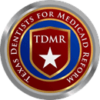
The TSBDE is holding a public stakeholder meeting this afternoon at the William B. Hobby Building in Austin on a “possible amendment of Board rule 22 TAC §108.14 – Pediatric and Special Needs Case Management; Protective Stabilization.”
Notice apparently not on website
We could not find the notice shown below on the TSBDE website despite looking on various pages. The news section hasn’t been updated since last August nor has the newsroom.
Per the notice, the Board requests stakeholder input on the following topics related to the text of the existing rule:- Update of American Academy of Pediatric Dentistry (AAPD) Guidelines, specifically updates published subsequent to 2014, the last year that 22 TAC §108.14 was amended. Board staff seeks input regarding the need for any additions or changes to the existing text of rule 22 TAC §108.14 in light of updated AAPD guidelines.
- Knee-to-Knee Examinations, specifically clarification of whether or not these types of examinations should be considered “Protective Stabilization” for purposes of 22 TAC §108.14. Board staff seeks input on the use and scope of knee-to-knee examinations, as well as stakeholder input regarding whether to consider knee-to-knee examinations as “Protective Stabilization” subject to the Board’s rule.
Concern about rule change
The provider who made us aware of this meeting expressed concerns that this rule change would make the examination of small children almost impossible as it would allow examination of cooperative children only.
The time of the meeting is 1:30 pm today at the William P. Hobby Jr. State Office Building, Tower III, Room 100, at 333 Guadalupe Street, Austin, Texas, 78701.
But just because you can’t attend, doesn’t mean you can’t submit your opinion.
Send input by email, fax or mail
For those that wish to provide informal input, this can also be done by mail, email or fax. Correspondence should be sent to:
TSBDE General Counsel333 Guadalupe Street, Suite 3-800,
Austin, Texas, 78701,
Fax (512) 305-9364,
Email: stakeholders@tsbde.texas.gov
Below the notice, we have the January edition of the TSBDE newsletter which has some proposed rule changes on sedation and anesthesia that will be taken up at their February 22 board meeting.
January newsletter (sign up here)


Broadly, physical restraint is defined by the Centers for Medicare and Medicaid Services as “(A) Any
42 manual method, physical or mechanical device, material, or equipment that immobilizes or reduces the
43 ability of a patient to move his or her arms, legs, body, or head freely; or (B) A drug or medication….
I don’t believe that the knee to knee exam constitues “medical Immobilization” any more than a parent holding a child in their arms while shopping or walking down the street is “Immobilization”
Most everyone with any rational thinking knows that this term refers to anything restraining a child e.g. straps or papoose boards.
Any program that I have taught in has a medical immobilization protocol, and knee to knee is correctly NOT included in this guideline.
We all have the image in our head of a knee to knee exam where the child is laying down while getting an exam. The problem is kids are put in a knee to knee exam position while violently screaming and resisting the whole time. This happens way more than it should.